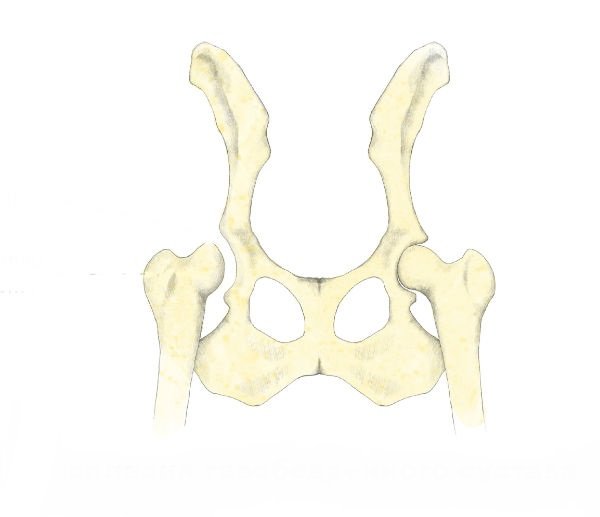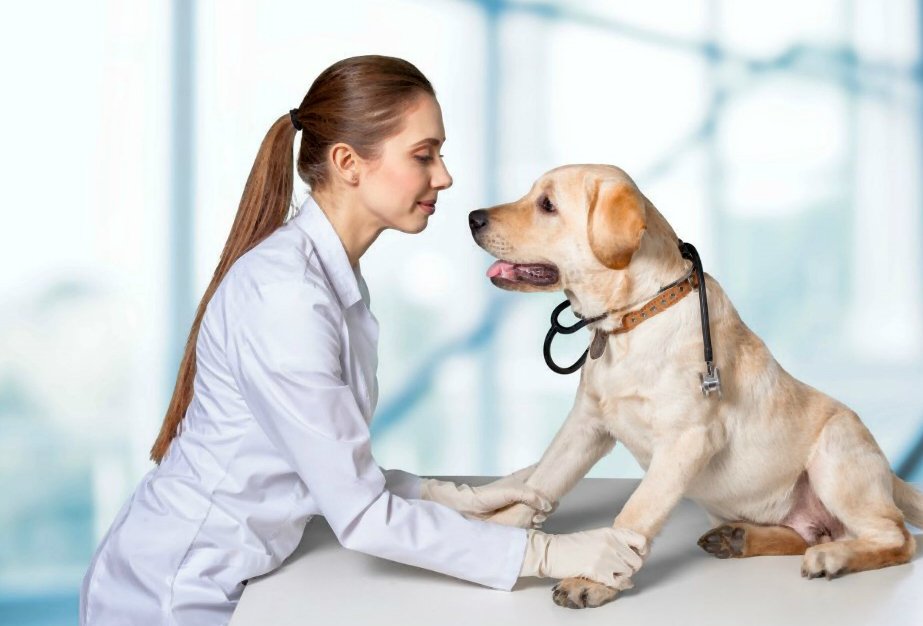Dog Hip Dysplasia – Common a disease that occurs in representatives of large breeds. From The quality and timeliness of treatment depends on the fate of the animal. If leave the problem unattended, then the dog’s life will be under a threat. Only a qualified doctor can recognize dysplasia, who will subsequently develop an adequate therapeutic regimen, adjust lifestyle and diet.
Content
- 1 Description and causes of the disease
- 2 Clinical manifestations and diagnosis
- 3 Treatment
- 3.1 Surgery
- 4 Prevention and prognosis
Description and causes of the disease
Contents

Incorrect selection of vitamins C and D leads to the development of the disease, calcium, phosphorus, overweight
Dysplasia is a condition in which there is joint destruction. If a long time treatment absent, then the entire musculoskeletal system is disrupted apparatus.
There are 5 main types of illness:
- 1 – characterized by the absence of symptoms and malfunctions joints
- 2 – boundary state between the norm and the beginning of development dysplasia;
- 3 – the animal experiences periodic dislocations;
- 4 and 5 – are characterized by a serious condition of the animal with disruption of the hip joints and everything musculoskeletal system.
Most often, the disease is found in large and giant dogs. rocks. Dysplasia is common in urban environments since dogs, living in apartments cannot lead an active life. At risk there are shepherd dogs, mastiffs, alabay, St. Bernards, bullmastiffs).
Reasons for the development of pathology:
- genetic predisposition;
- the wrong diet;
- increased physical activity (especially in childhood to 1.5 years);
- sedentary lifestyle;
- leg injuries.
Clinical manifestations and diagnosis

Doctors recommend not looking for symptoms of dysplasia in puppies until of the year
Dog dysplasia in dogs has various symptoms. They begin to appear already in half a year old. Clinical manifestations depend on breed and lifestyle of the animal. Dog bones form by 12 months, so up to this age talk about the condition Hip joints are difficult.
It happens that in young dogs the clinical manifestations of dysplasia are temporary phenomenon. When the joints and muscles get stronger, the puppy will gain sufficient body weight, all manifestations of the disease disappear. At suspected joint disease you need to see a doctor, so how timely treatment will allow you to adjust your health dogs.
Manifestations of the disease:
- rocking from side to side while walking;
- inability to climb or go down the stairs;
- the presence of lameness;
- fast fatiguability;
- repulsion by two hind limbs simultaneously with running;
- unnatural eversion of paws in a lying position;
- the presence of swelling of the joints;
- narrowing of the pelvis and widening of the front of the body.
When contacting a veterinary clinic, the doctor will examine and will do a diagnostic test. It will reveal the presence of squeaks, clicks, friction, pain.
If, upon examination, the veterinarian presumably makes a diagnosis, diagnosis is carried out using radiography. Procedure performed under general anesthesia, as to obtain accurate results the dog must be completely immobilized. After the doctor evaluates image, takes measurements of angles and compares them with indicators in special table.
When the doctor cannot make an accurate diagnosis, additional examination – arthroscopy. Through a puncture in the joint a device is introduced that allows a detailed review of the availability Problems.
Every breeder needs to know what threatens hip dysplasia. joints in dogs. If no diagnosis has been made after diagnosis treatment, the disease progresses rapidly. Over time animal loses the ability to move independently.
Treatment

Changing the dosage or duration of treatment is prohibited, as this may harm the dog
Therapy is conservative or surgical. by the way. With mild joint damage is enough adjust the lifestyle and diet of the dog.
Dog hip dysplasia involves treatment with medicines:
- anti-inflammatory;
- antispasmodics;
- chondroprotectors.
Additionally, balanced feeds are prescribed, vitamin and mineral complexes. Dosage and treatment calculated for each animal individually.
The complex treatment includes physiotherapy:
- ozokerite;
- paraffin baths;
- magnetotherapy;
- laser treatment;
- massage.
In the early stages, the doctor will prescribe homeopathic remedies, which activate the internal forces of the body and improve overall condition of the dog.
Conservative treatment is effective only with timely detecting. Medicines are not able to repair damaged joint. Such therapy is aimed at relieving symptoms and improving quality of life of the animal.
Surgical intervention
Surgery for hip dysplasia in dogs appointed in serious condition and the threat of immobilization. The head is adjusted during surgery the hip joint. The method of operation is selected depending on degree of damage.
The doctor makes a choice in favor of one of 3 types of operations:
- Triple osteotomy – establishing a special the plate that holds the joint in its natural position. It is carried out only after the puppy reaches 18 months, when skeleton formation ends. Dog Arthritis considered a contraindication to this type of treatment.
- Replacing your own joint with a prosthesis that made individually from titanium. If the treatment will be carried out successfully, the prosthesis will take root, and the animal will return to normal lifestyle.
- Excision of the femoral head is a complicated procedure, which requires a long recovery period. After Rehabilitation dog can lead an active lifestyle.
Surgical treatment is considered a complex and dangerous method. Before By appointment, the doctor calculates all possible risks, conducts a complete examination of the dog.
Prevention and Predictions

When prone to dysplasia, the animal must be fed with glucosamine and chondroitin
To rule out the genetic factor of dysplasia, the host you need to see the documents of the puppy’s parents, where it will be noted that they do not suffer from joint diseases. Then the puppy needs show the veterinarian at the age of 5, 12 and 18 months. At an x-ray is taken to confirm the absence or the presence of changes in the joint tissues.
Prevention of Hip Dysplasia in Dogs includes:
- balanced diet;
- proper physical activity;
- regular examination by a veterinarian.
The dog should be regularly taken outside, since the closed space leads to obesity, joint pathologies and other body systems. Once a year, the animal needs to be given a course vitamin and mineral complexes.
Each owner with a large breed dog is interested in the question, how many dogs with hip dysplasia live. Exact there is no answer to it, since it all depends on the individual features of the animal and its lifestyle.
Hip dysplasia is a common disease, which affects mainly large breeds of dogs and very rarely – small ones. With timely detection of pathology and the correct dog therapy does not threaten anything. If clinical manifestations to ignore, do not drive the animal on preventive examinations, then the disease will progress that will lead to complete immobilization and death.






